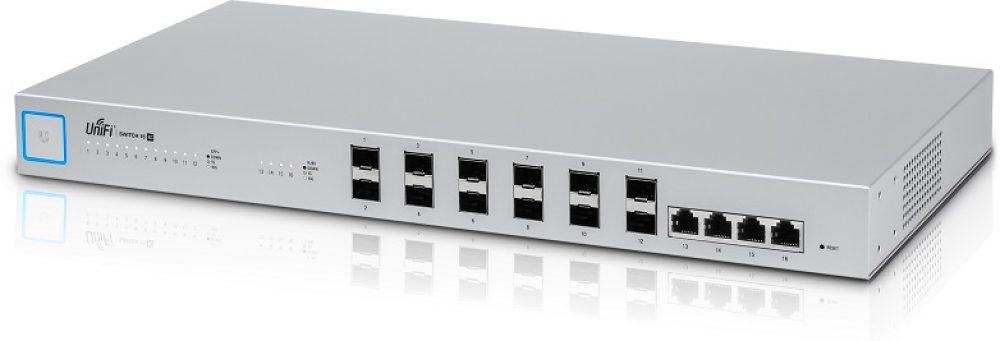 I finally broke down and added the UDM Pro to my Ubiquiti router lab. Here are the specs as provided in the Early Access store:
I finally broke down and added the UDM Pro to my Ubiquiti router lab. Here are the specs as provided in the Early Access store:
- 8-Port gigabit switch with 10G SFP+ port
- Dual WAN ports for redundancy and load balancing: 10G SFP+ and 1G RJ-45
- Bluetooth connectivity for easy setup via UniFi app
- Scalable UniFi Network Controller with advanced management capabilities
- UniFi Protect video surveillance NVR with 3.5″ (or 2.5″) HDD support
- Enterprise-class IPS/IDS and DPI capabilities
- 1 x 1.3″ Touchscreen display for quick status information
- Powered by fast 1.7 GHz quad-core processor
Not mentioned is that the UDM / UDM Pro use a new OS that is not derived from EdgeOS / VyOS / Vyatta. This is why I’d held off on buying one, when the UDM was first made available to Early Access back in March it was FAR from having feature-parity with the EdgeOS-based USGs. The present state of UbiOS is much closer to production-ready (by UniFi standards).
From the perspective of the USG Pro, this is a pretty serious upgrade in performance with a very minor bump in the expected MSRP. 10Gb/s inter-VLAN routing and WAN. Supposedly can hit 5Gb/s of IPS/IDS throughput — I’m underwhelmed by Ubiquiti slapping a pretty face over open source Suricata with publicly-available lists, but I seem to be a minority.
It’s also quiet. With it sitting on my desk and the LCD showing the fans at 50%, I struggle to hear it. The USG Pro, USG-XG-8, and their EdgeRouter siblings are not quiet-space-friendly.
I feel like they’ve missed the boat in a couple of areas with regards to Protect.
One, those LAN ports should have POE. As a router, those ports are of marginal value — where a $379 router is justified, it’s going to be attached to a larger switch. But as an NVR with a larger storage capacity than the Cloudkey Gen2 Plus, having 8 PoE ports would cover many deployment scenarios and would be quite valuable (12-16 ports would be better).
Two, it should have more drive bays. 2x LFF would have been nice. More LAN ports w/ PoE and 4x SFF bays could be better.
Three, it needs a USB host port for offloading footage directly to removable storage. As things stand now, pulling footage out of Protect is a pile of suck, but presumably it will get better, and being able to push footage directly to removable storage would be a great feature.
Ubiquiti has teased a larger, 4x LFF device. It’s not clear if that will be a NAS that Protect can use, or if it will run Protect directly, and they haven’t shown the back yet so we don’t know if it has PoE switch ports to act as a more traditional NVR appliance.
